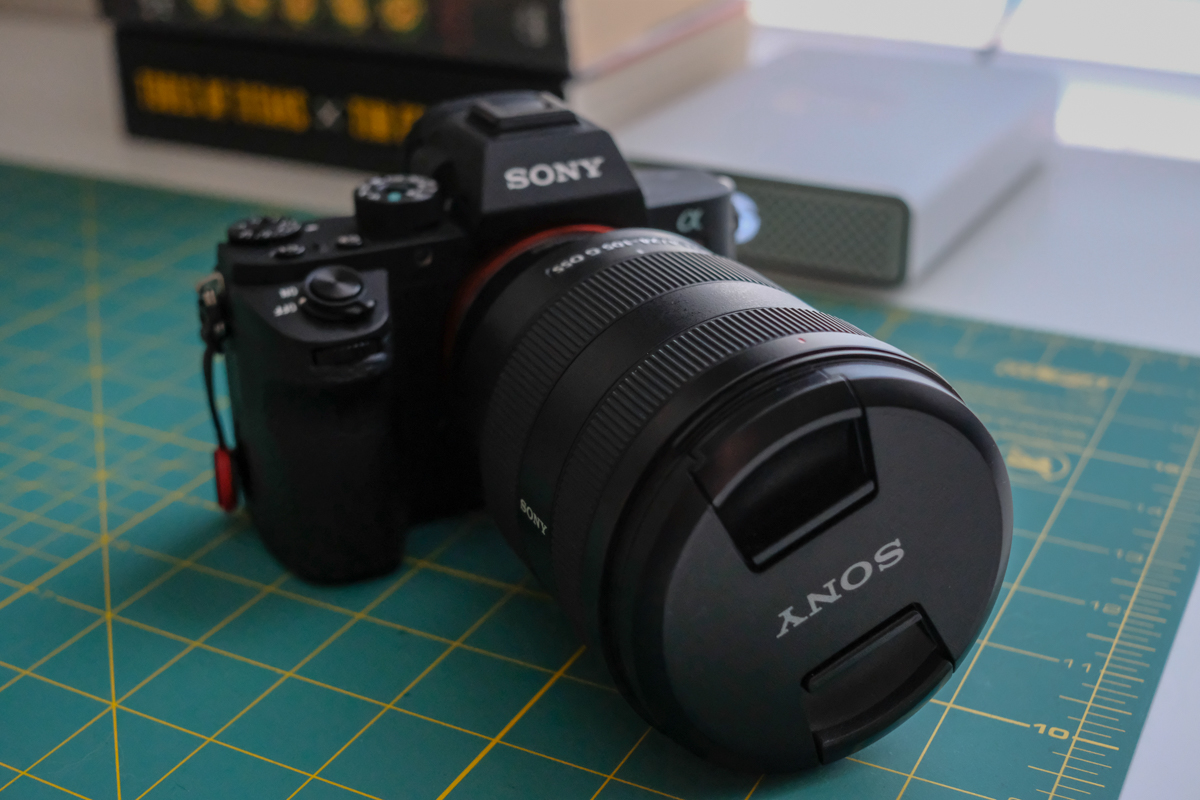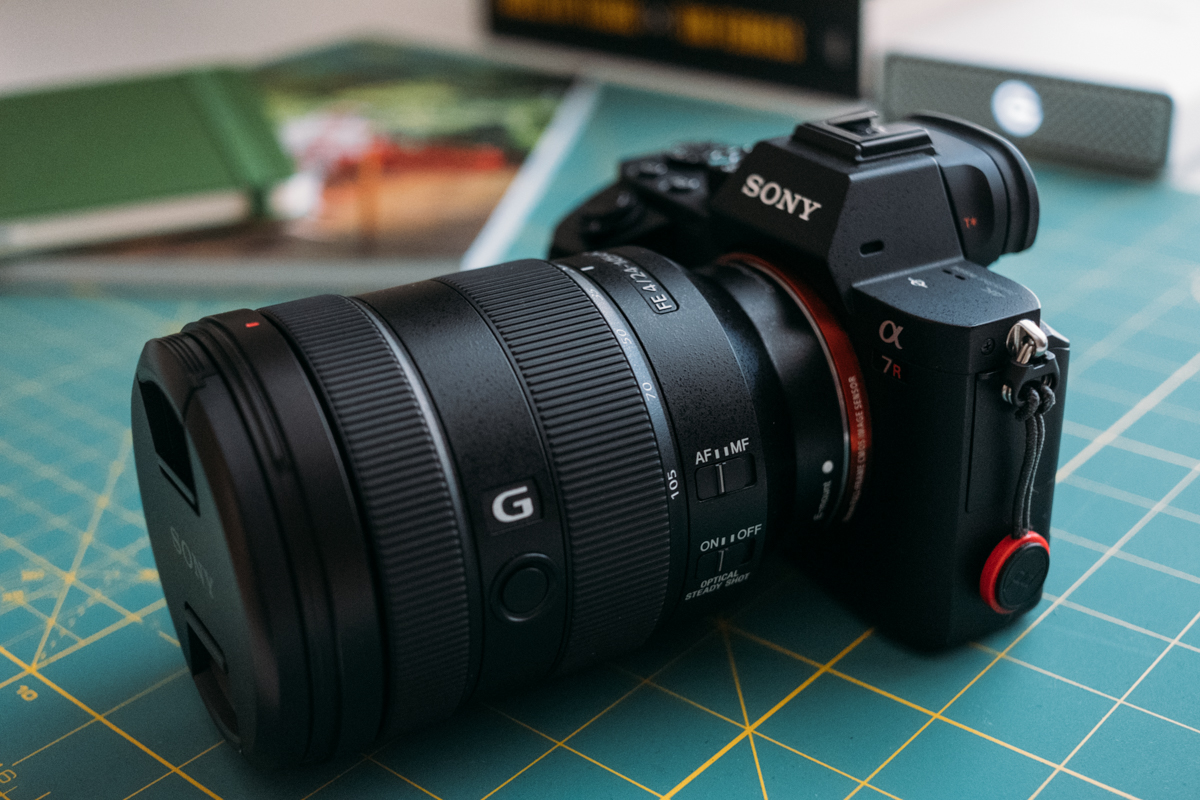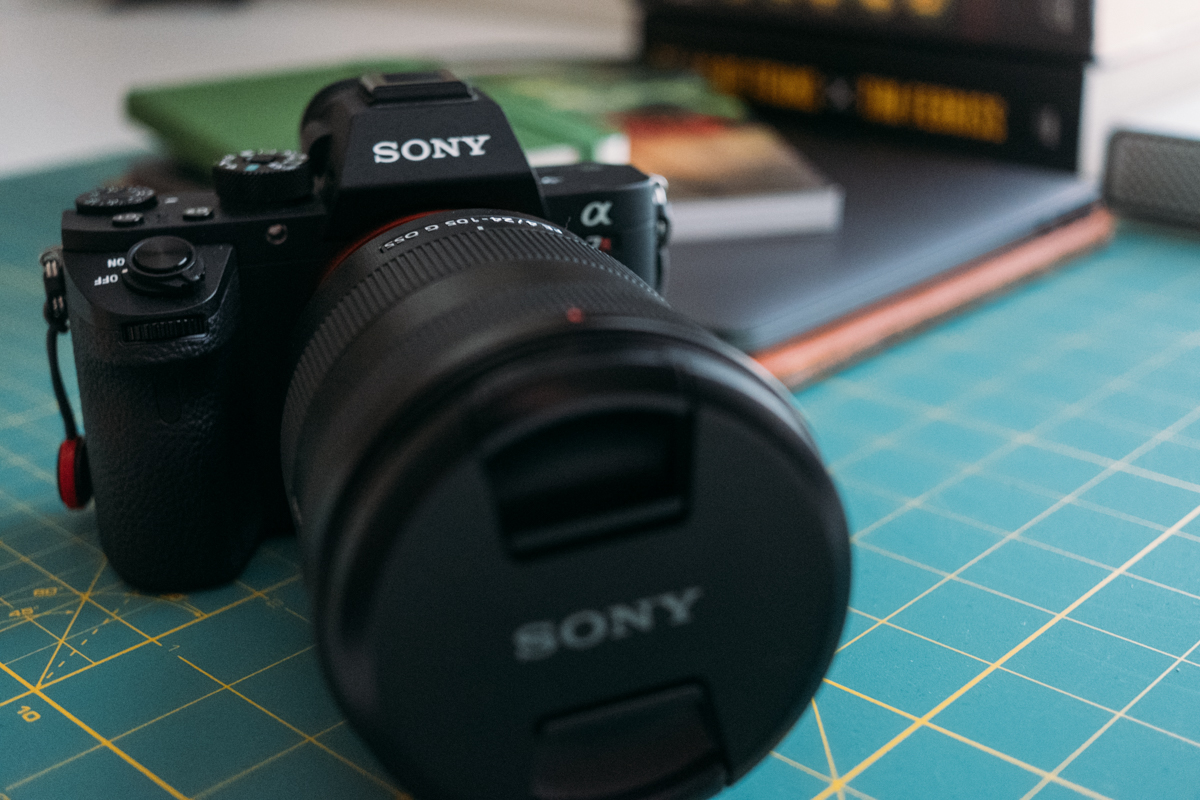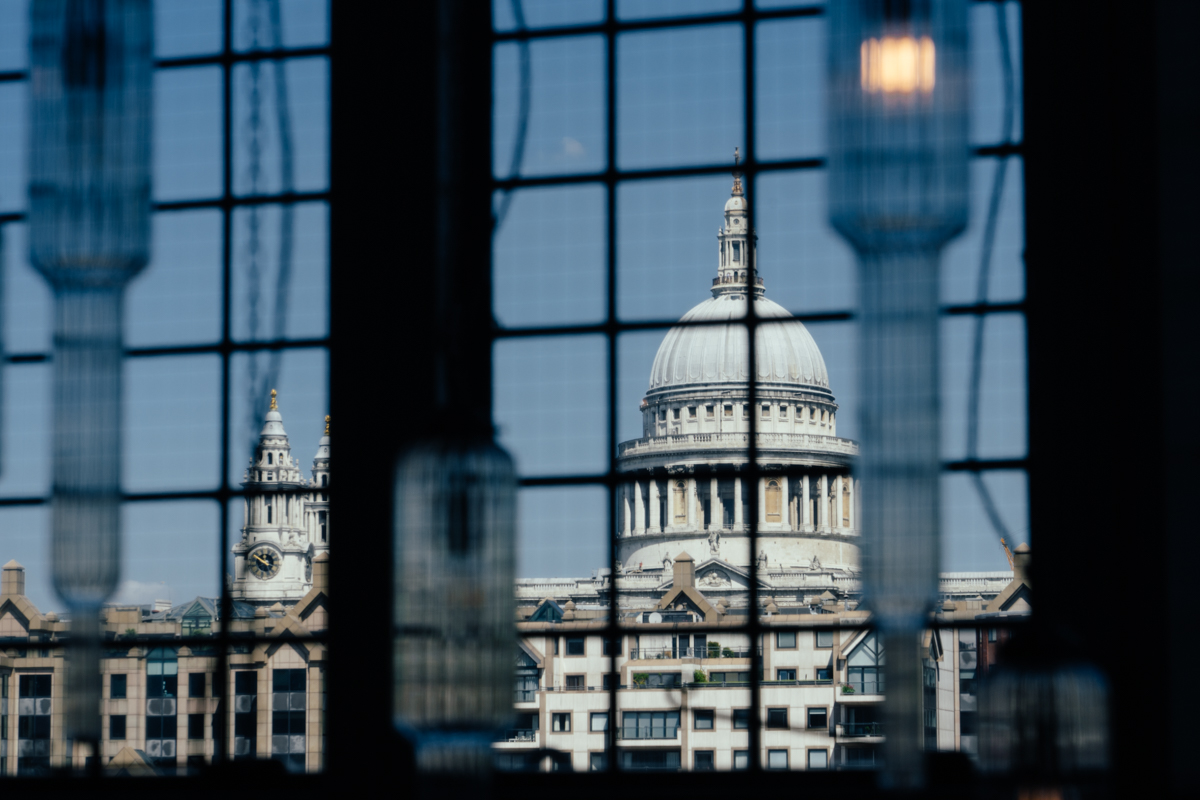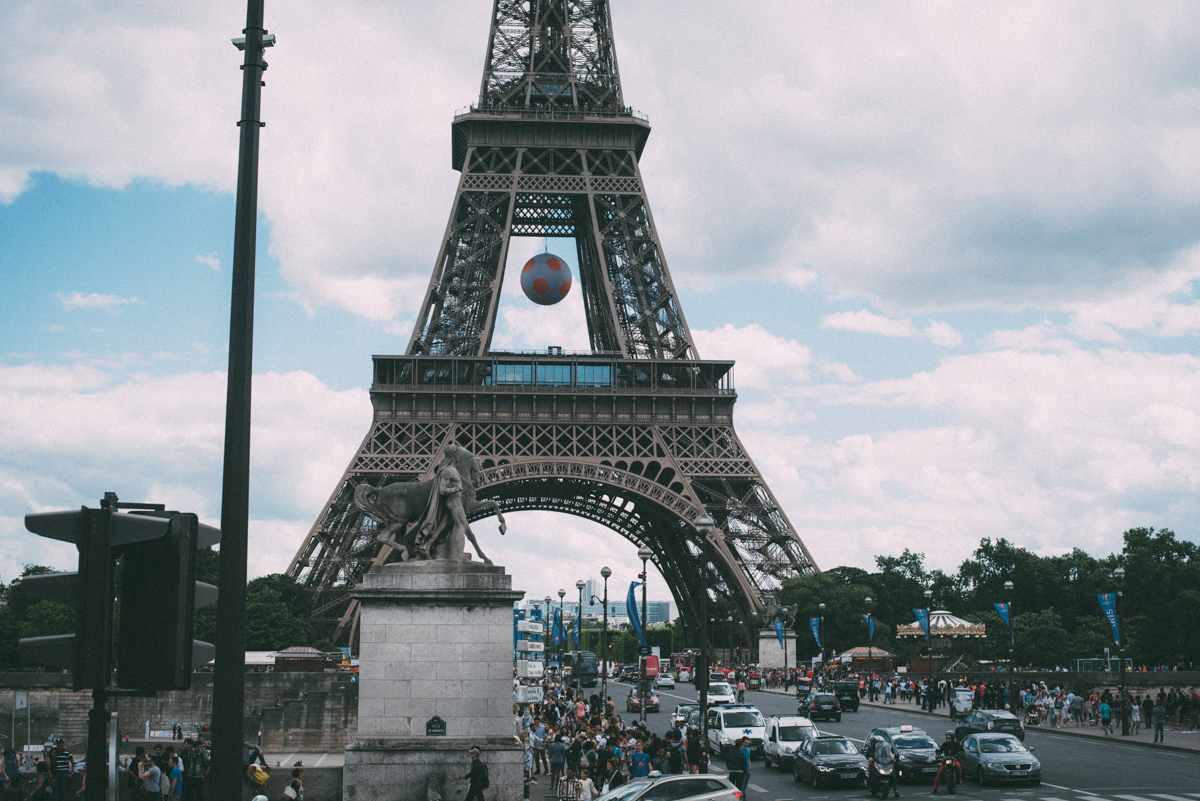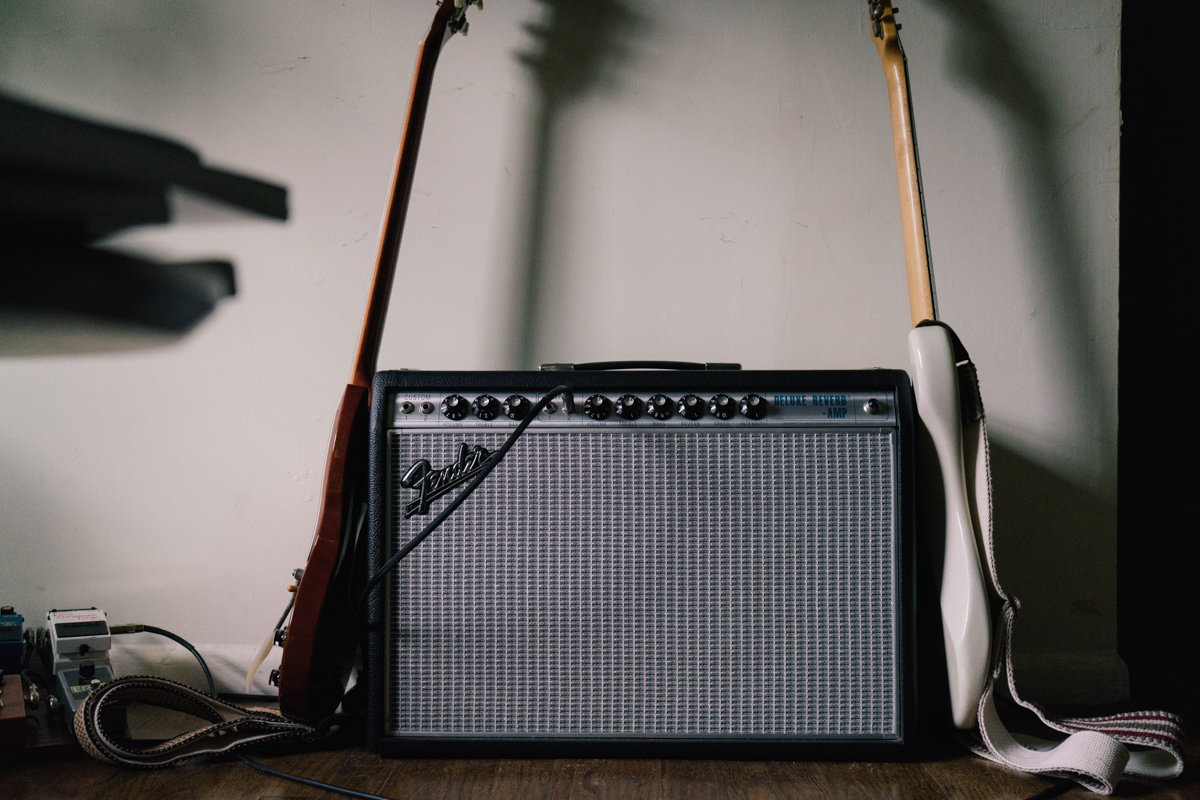When I packed my bag for four days in London this summer, I limited myself to a pretty small camera setup. It wasn’t quite as small as my trip to Paris and Amsterdam where I only took a 50mm lens with my Nikon D750, but it wasn’t far off.
Into my bag went a Sony a7RII, a Sony 50mm 1.8, and the new Sony 24-105mm f/4 G Series lens. Actually, I picked up the 24-105 specifically for this trip. I’m not the biggest fan of zoom lenses in general, but the versatility and small build of such a long lens intrigued me.
Luckily, it arrived two days before I took off. Thanks, FedEx.
Look and Feel
The first thing I noticed was the build quality compared to the 50mm I owned. Every bit of it felt high quality and able to withstand a tough day of shooting anywhere in the world. When attached to the a7RII, it looks like it was built to be an upscale kit lens. The focus hold button midway up the barrel is also a great addition that doesn’t get in the way when not being utilized.
Weight
So the tradeoff with a zoom lens is usually in the weight department, you gain more focal length and lose portability. For the 24-105mm I feel that the tradeoff is more than fair. After lugging it around the streets of London pretty much every day of the trip, the extra 1.46 lbs (663 g) didn’t bother me at all.
Sure it’s not as light as the newer Tamron 28-75mm f/2.8, which is a fantastically light 1.2 lbs, but the Sony 24-105mm makes up for that lost weight and aperture with some fantastic images, a longer focal length, and ease of use.
Images
Like I said before, I’m generally not a zoom lens fan, but when you need to be out all day taking photos, a lens that can cycle through focal lengths quickly and without having to change aperture can be invaluable.
Sony 24-105mm at 87mm, 1/320 sec. at f/7.1. ISO 100.
One of the first things that drew me to the 24-105mm was a review on PetaPixel where photographer QT Luong talked about how he doesn’t usually shoot with wide open aperture. I’m pretty similar in that way, especially when it comes to traveling. At only f/4, the 24-105mm is slower than the Tamron 28-75mm f/2.8 but having that extra 25mm in focal length was what really hooked me.
When I take travel shots, the majority of them are outside and don’t call for stopping down my lens to f/2.8 or below. Sure I don’t always get that smooth bokeh when staying at f/4, but I do get more control over what is shown in the image. For me, that’s the critical part.
Sony 24-105mm at 75mm, 1/320 sec. at f/4. ISO 100
The Sony 24-105mm f/4 allowed me to walk around and take some beautiful portraits, landscape shots, and medium-range street-style photos without having to change lenses once. The in body image stabilization also comes in really handy when shooting at the longer focal lengths.
Sony 24-105mm at 51mm, 1/40 sec. at f/4. ISO 400
Travel
When I went to Paris and Amsterdam in 2015, I took my Nikon D750 and only a 50mm lens as a way to challenge myself photographically. Since that time I’d switched to a much smaller Sony body and wasn’t as concerned about the weight factor of carrying around more than one lens. The 24-105mm fit perfectly in the bottom of my Peak Design 20L Everyday Backpack, attached to the Sony a7RII.
Sony 24-105mm at 105mm, 1/500 sec. at f/9. ISO 200
With the weightiest piece in the bottom of the bag, I rarely felt it as I walked around the British capital. My camera setup was actually slightly more substantial than when I did the 50mm challenge, but the smaller form factor made it easier to hold on my body all day.
Conclusion
If you’re looking for a lens that can do it all right out of the box but is still an upgrade over a kit style lens, the Sony 24-105mm f/4 G Series might be precisely what you’re looking for.
After working with the 24-105mm for almost six months, it’s easily one of my best purchases for the Sony E-mount ecosystem.
You can view more about the Sony 24-105mm f/4 G Series lens here and purchase it on Amazon using the button below.


